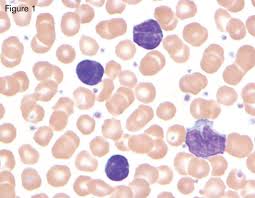What's in this article?
Lymphocytosis (high lymphocyte count)
Lymphocytosis (lim-foe-sie-TOE-sis), or a high lymphocyte count, is an increase in white blood cells called lymphocytes. Lymphocytes are an important part of the immune system. They help fight off diseases, so it’s normal to see a temporary rise in the number of lymphocytes after an infection.
A count significantly higher than 3,000 lymphocytes in a microliter of blood is generally considered to be lymphocytosis in adults. In children, the threshold for lymphocytosis varies with age. It may be as high as 9,000 lymphocytes per microliter. The exact thresholds for lymphocytosis may vary slightly from one lab to another.
read more: Atypical Lymphocytosis Unusual Case
Causes of reactive lymphocytosis
Infections
Viral
- Infectious mononucleosis (Epstein-Barr virus)
- Cytomegalovirus (CMV)
- Mononucleosis syndrome (adenovirus type 12, herpes virus-6)
- HIV-1 (during early seroconversions associated with CMV) (chronic, associated with post-splenectomy state)
- HTLV-1 associated benign T cell lymphocytosis
- Mumps, varicella, influenza, hepatitis, rubella, roseola
- Infectious lymphocytosis (Coxsackie virus B2, enteroviruses including poliovirus, others)
Bacterial
- Pertussis
- (Occasional) cat-scratch fever, tuberculosis, brucellosis, syphilis
Protozoal
- Toxoplasmosis
Parasitic
- Babesiosis
Rickettsial
- (Occasional) scrub typhus
Hypersensitivity
- Drug-induced
- Serum sickness
Stress
- Post trauma
- Post splenectomy
- Cigarette smokers
Autoimmune
- Lymphocytosis of large granular lymphocytes
- Rheumatoid arthritis
- Malignant thymoma
Endocrine
- Hyperthyroidism
Pre-malignant states
- Monoclonal B cell lymphocytosis
read more: Atypical Lymphocytosis: Causes & Treatment
What are the main causes of lymphocytosis?
Over 80% of patients have lymphocytosis as an incidental finding on a routine full blood count for unrelated symptoms or as part of health screening.
- Transient, reactive lymphocytosis is frequently seen in acute self-limiting viral infection, particularly infectious mononucleosis, and in smokers.
- Chronic infections like tuberculosis, brucellosis, secondary syphilis
- Leukaemia and occasionally lymphoma. Chronic lymphocytosis is characteristic of chronic lymphocytic leukaemia, the incidence of which peaks between 60 and 80 years of age. In its early stages this condition is frequently asymptomatic and treatment is only required in significant progression which is about 1% per year.
read more: Signs and Symptoms of Lymphocytosis






Leave a Comment